Unit 8 Lesson 48 Supper with the Bradshaws 课件(26张PPT)
文档属性
| 名称 | Unit 8 Lesson 48 Supper with the Bradshaws 课件(26张PPT) |
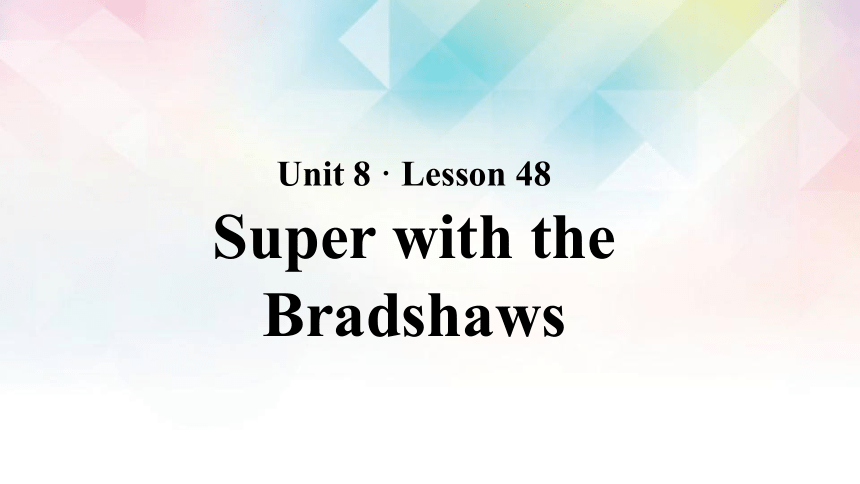
|
|
| 格式 | pptx | ||
| 文件大小 | 1.7MB | ||
| 资源类型 | 教案 | ||
| 版本资源 | 冀教版 | ||
| 科目 | 英语 | ||
| 更新时间 | 2020-05-11 11:43:45 | ||
图片预览

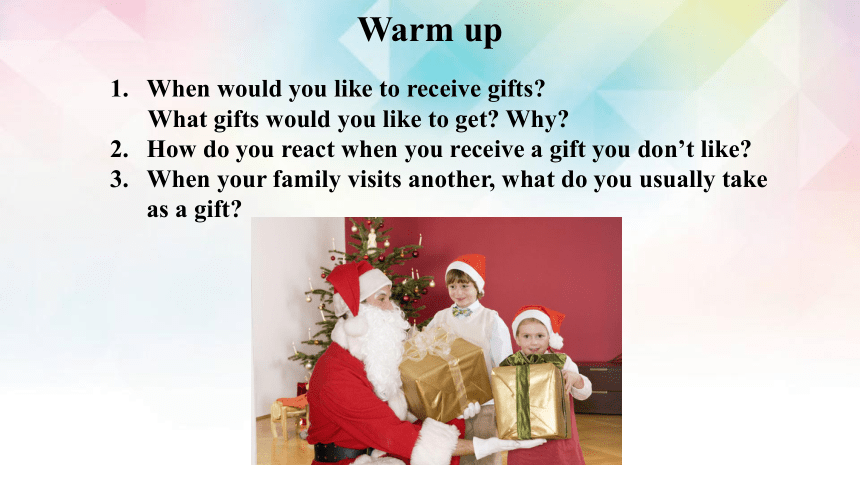
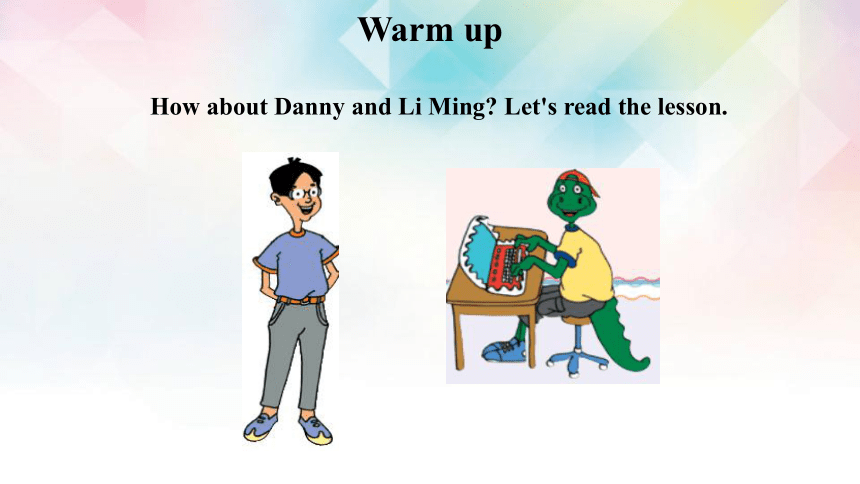
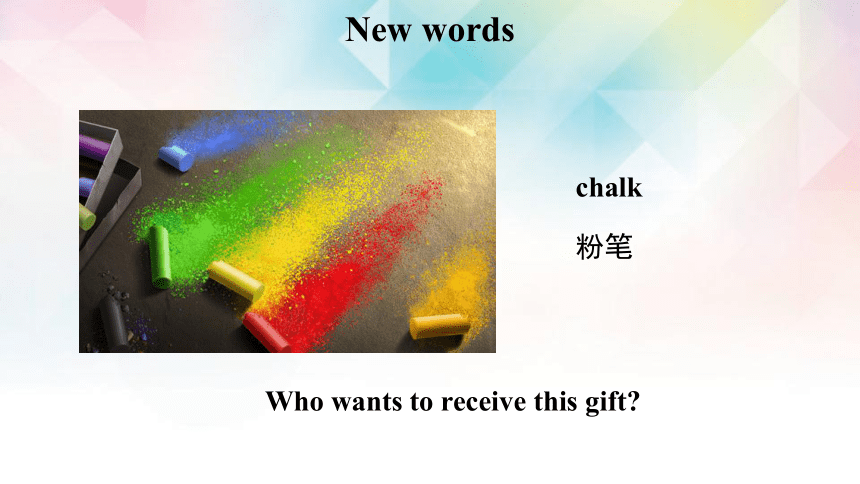
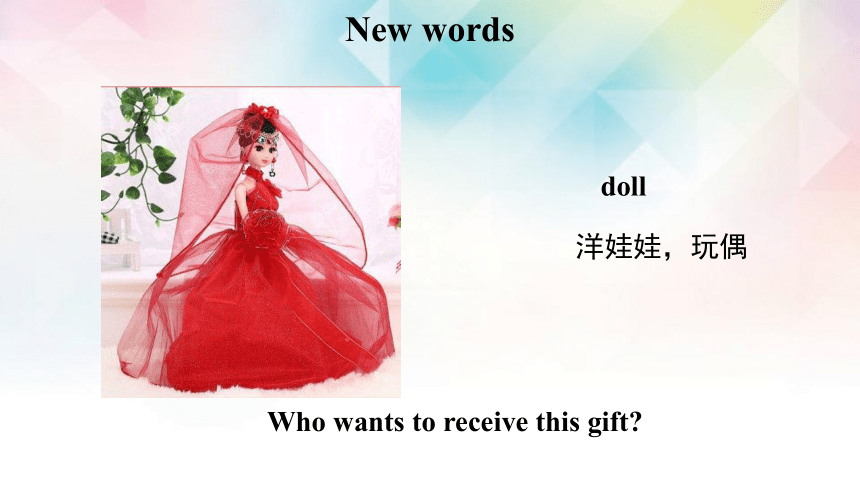
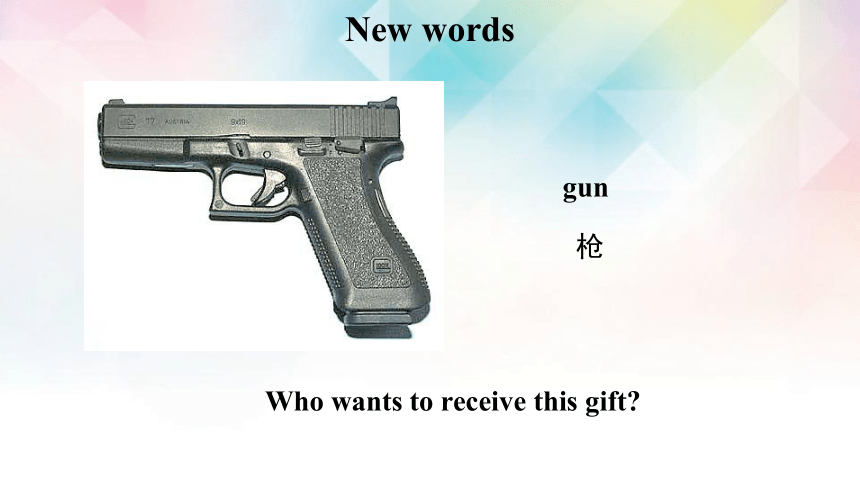
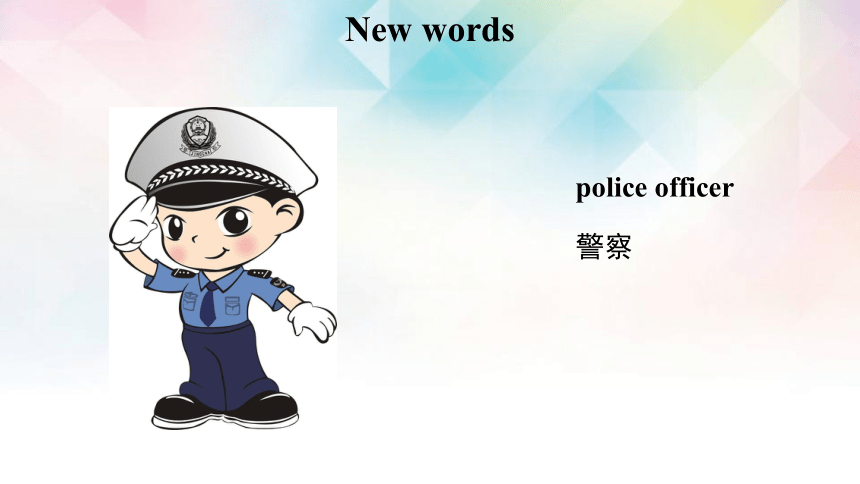
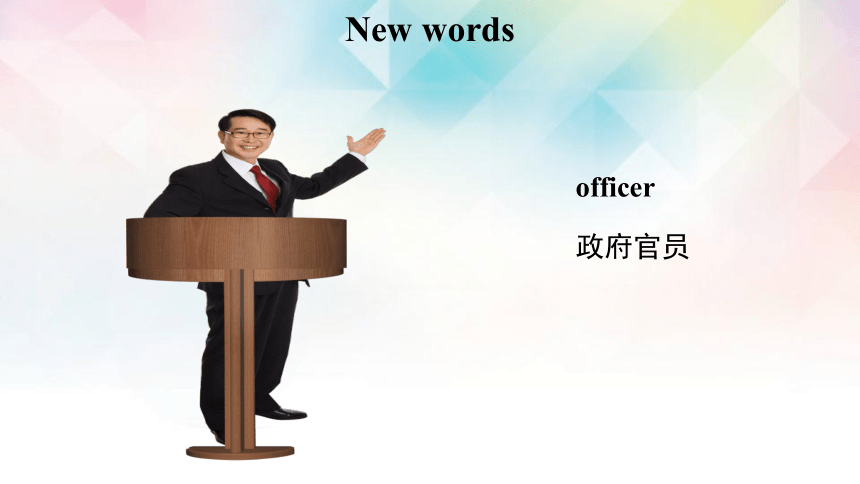
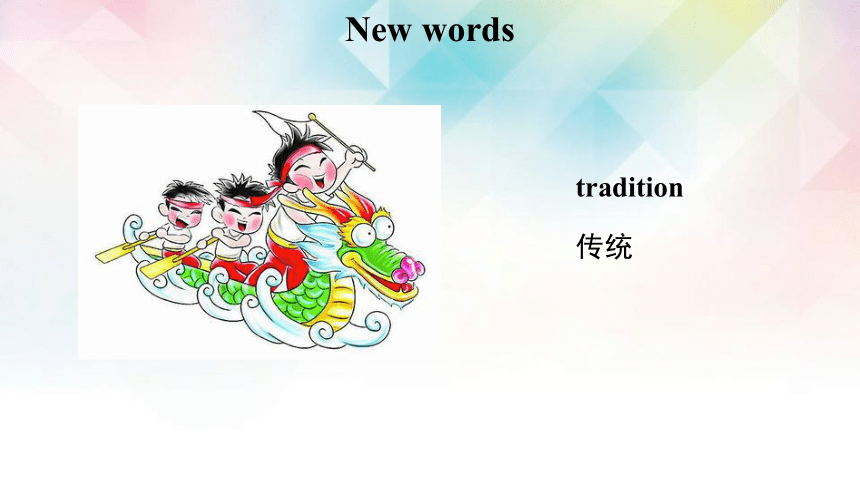
文档简介
(共26张PPT)
Unit 8 · Lesson 48
Super with the Bradshaws
When would you like to receive gifts
What gifts would you like to get Why
How do you react when you receive a gift you don’t like
When your family visits another, what do you usually take as a gift
Warm up
How about Danny and Li Ming Let's read the lesson.
Warm up
chalk
粉笔
Who wants to receive this gift
New words
doll
洋娃娃,玩偶
Who wants to receive this gift
New words
gun
枪
Who wants to receive this gift
New words
police officer
警察
New words
officer
政府官员
New words
tradition
传统
New words
reaction (n.)
反应
react (v.)
New words
1. Li Ming liked Mr. Bradshaw’s cookies. ( )
2. Li Ming accepted Mr. Bradshaw’s gift although he didn’t like it. ( )
3. Debbie liked the toy gun that Danny gave her as a Christmas gift. ( )
4. Danny is planning another trip to Chinatown. ( )
Read the lesson and write true (T) or false (F).
F
T
F
T
Presentation
in the end与at the end of
in the end“最后;终于”,=finally,常常独立地作状语。
at the end of“在……尽头;在……末尾”。
e.g. I saw my classmate at the end of the classroom.
我在教室的尽头看见了我同学。
注意:in the end后不接of短语。
He pass the exam in the end.
他最终通过了考试。
Language points
each单独作主语,谓语动词用单数形式。
e.g. Each suppose me.
每个人都支持我。
each of短语作主语,谓语动词用单数或复数形式都可以。
e.g. Each of them is to write their own suggestions.
他们各人写出自己的建议。
Language points
do with与what连用时,“对待;处理;利用”。
e.g. They don’t know what to do with the accident.
他们不知道该怎样处理这次事故。
do with与can 或could连用时,意思是“想要;需要”。
e.g.The car can do with repairing.
这辆汽车需要修理。
do with 在否定句中,意思是“容忍,忍受”。
e.g. I can’t do with your dance.
我忍受不了你的舞蹈。
Language points
be busy with / at / over / about“忙于……”。
e.g. The students are busy with / at / over their studies.
学生们正在忙于学习。
表示“忙于做某事”还可以用 be busy (in) doing sth. 和 busy oneself with / in /at / about sth.结构。
e.g. My teacher was busy (in) checking the students’ papers.
我的老师忙着阅卷。
Language points
cannot help but“不得不;不 会不,必然”,后接动词原形。
e.g. I cannot help but admire your courage.
我不得不赞赏你的勇气。
Language points
dream可以作可数名词,“梦想;梦”;dream也可以作动词,“做梦;梦想”。当dream作动词时,既可作及物动词,也可作不及物动词。作不及物动词时,常与介词of或about连用,dream of / about后通常接名词或v.-ing形式。
e.g. One of my dreams is to be a great singer.
我的梦想之一就是成为一个伟大的歌唱家。
He dreamed a strange dream last night.
他昨晚做了一个奇怪的梦。
I often dream of / about my hometown.
我经常梦见我的家乡。
Language points
Complete the passage with the correct forms of the words in the box.
officer gun praise catch react
There was a robbery yesterday afternoon. Two men rushed into the City Bank with ______ in their hands. All the people were scared except a smart clerk.
She ________ quickly and pushed the alarm immediately. Soon the robbers ___________ by the police ________. Luckily, there was no loss or injuries. This clerk ____________ by the mayor.
guns
reacted
were caught
officers
was praised
Practice
Let’s do a quick quiz!
You know about Santa Claus, don’t you He’s that man in red clothes. He has a long, white beard. He wears black boots. He says, “Ho! Ho! Ho!” He and Christmas go together. Over the years, the stories about Santa Claus have grown.
He has an address, a special type of transportation and a special way to get into children’s houses. Do you know what they are Let’s do a quiz!
Practice
1. Where does Santa Claus live
It is said that Santa Claus lives at the North Pole.
2. Santa rides in a sleigh. What animals
pull his sleigh
Reindeer pull Santa’s sleigh.
Practice
3. Children believe that Santa visits them on Christmas Eve. How does he get into their houses
Santa comes down the chimney. When he leaves, he goes up the chimney.
Practice
Group work:
According to the two e-mails and make some changes in groups if you like.
Practice
Write about your experience that you received something as a gift you didn’t like.
1. Who gave you the gift
2. When did you get the gift
3. Why didn’t you like the gift
4. What was your reaction
Practice
Enjoy the story: What have you learned from the story Can you get a saying
Seeing is believing
眼见为实
Practice
1.Listen and read.
2.Finish exercises of this lesson.
Homework
再 见
Unit 8 · Lesson 48
Super with the Bradshaws
When would you like to receive gifts
What gifts would you like to get Why
How do you react when you receive a gift you don’t like
When your family visits another, what do you usually take as a gift
Warm up
How about Danny and Li Ming Let's read the lesson.
Warm up
chalk
粉笔
Who wants to receive this gift
New words
doll
洋娃娃,玩偶
Who wants to receive this gift
New words
gun
枪
Who wants to receive this gift
New words
police officer
警察
New words
officer
政府官员
New words
tradition
传统
New words
reaction (n.)
反应
react (v.)
New words
1. Li Ming liked Mr. Bradshaw’s cookies. ( )
2. Li Ming accepted Mr. Bradshaw’s gift although he didn’t like it. ( )
3. Debbie liked the toy gun that Danny gave her as a Christmas gift. ( )
4. Danny is planning another trip to Chinatown. ( )
Read the lesson and write true (T) or false (F).
F
T
F
T
Presentation
in the end与at the end of
in the end“最后;终于”,=finally,常常独立地作状语。
at the end of“在……尽头;在……末尾”。
e.g. I saw my classmate at the end of the classroom.
我在教室的尽头看见了我同学。
注意:in the end后不接of短语。
He pass the exam in the end.
他最终通过了考试。
Language points
each单独作主语,谓语动词用单数形式。
e.g. Each suppose me.
每个人都支持我。
each of短语作主语,谓语动词用单数或复数形式都可以。
e.g. Each of them is to write their own suggestions.
他们各人写出自己的建议。
Language points
do with与what连用时,“对待;处理;利用”。
e.g. They don’t know what to do with the accident.
他们不知道该怎样处理这次事故。
do with与can 或could连用时,意思是“想要;需要”。
e.g.The car can do with repairing.
这辆汽车需要修理。
do with 在否定句中,意思是“容忍,忍受”。
e.g. I can’t do with your dance.
我忍受不了你的舞蹈。
Language points
be busy with / at / over / about“忙于……”。
e.g. The students are busy with / at / over their studies.
学生们正在忙于学习。
表示“忙于做某事”还可以用 be busy (in) doing sth. 和 busy oneself with / in /at / about sth.结构。
e.g. My teacher was busy (in) checking the students’ papers.
我的老师忙着阅卷。
Language points
cannot help but“不得不;不 会不,必然”,后接动词原形。
e.g. I cannot help but admire your courage.
我不得不赞赏你的勇气。
Language points
dream可以作可数名词,“梦想;梦”;dream也可以作动词,“做梦;梦想”。当dream作动词时,既可作及物动词,也可作不及物动词。作不及物动词时,常与介词of或about连用,dream of / about后通常接名词或v.-ing形式。
e.g. One of my dreams is to be a great singer.
我的梦想之一就是成为一个伟大的歌唱家。
He dreamed a strange dream last night.
他昨晚做了一个奇怪的梦。
I often dream of / about my hometown.
我经常梦见我的家乡。
Language points
Complete the passage with the correct forms of the words in the box.
officer gun praise catch react
There was a robbery yesterday afternoon. Two men rushed into the City Bank with ______ in their hands. All the people were scared except a smart clerk.
She ________ quickly and pushed the alarm immediately. Soon the robbers ___________ by the police ________. Luckily, there was no loss or injuries. This clerk ____________ by the mayor.
guns
reacted
were caught
officers
was praised
Practice
Let’s do a quick quiz!
You know about Santa Claus, don’t you He’s that man in red clothes. He has a long, white beard. He wears black boots. He says, “Ho! Ho! Ho!” He and Christmas go together. Over the years, the stories about Santa Claus have grown.
He has an address, a special type of transportation and a special way to get into children’s houses. Do you know what they are Let’s do a quiz!
Practice
1. Where does Santa Claus live
It is said that Santa Claus lives at the North Pole.
2. Santa rides in a sleigh. What animals
pull his sleigh
Reindeer pull Santa’s sleigh.
Practice
3. Children believe that Santa visits them on Christmas Eve. How does he get into their houses
Santa comes down the chimney. When he leaves, he goes up the chimney.
Practice
Group work:
According to the two e-mails and make some changes in groups if you like.
Practice
Write about your experience that you received something as a gift you didn’t like.
1. Who gave you the gift
2. When did you get the gift
3. Why didn’t you like the gift
4. What was your reaction
Practice
Enjoy the story: What have you learned from the story Can you get a saying
Seeing is believing
眼见为实
Practice
1.Listen and read.
2.Finish exercises of this lesson.
Homework
再 见
同课章节目录
- Unit 7 Work for Peace
- Lesson 37 Don't Fight!
- Lesson 38 Making School a Better Place
- Lesson 39 The Dove and the Olive Branch
- Lesson 40 The UN—Power of Words
- Lesson 41 Jenny's Good Advice
- Lesson 42 Peace at Last
- Unit Review
- Unit 8 Culture Shapes Us
- Lesson 43 A Visit to Chinatown
- Lesson 44 Popular Sayings
- Lesson 45 Different Manners
- Lesson 46 Home to Many Cultures
- Lesson 47 Good Manners
- Lesson 48 Supper with the Bradshaws
- Unit Review
- Unit 9 Communication
- Lesson 49 Get Along with Others
- Lesson 50 Tips for Good Communication
- Lesson 51 What Could Be Wrong?
- Lesson 52 The Power of a Smile
- Lesson 53 Working in Groups
- Lesson 54 How Embarrassing!
- Unit Review
- Unit 10 Get Ready for the Future
- Lesson 55 Look into the Future
- Lesson 56 Manage Your Time
- Lesson 57 Best Wishes
- Lesson 58 Ms.Liu's Speech
- Lesson 59 Keep Your Choices Open
- Lesson 60 Get a Good Education
- Unit Review
